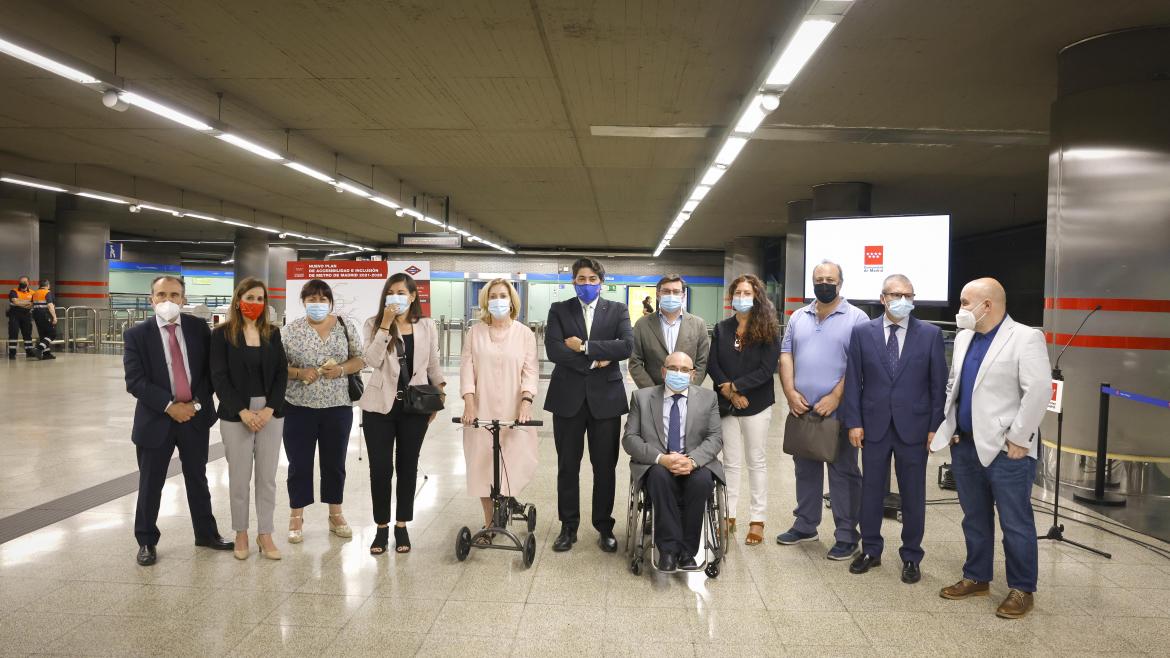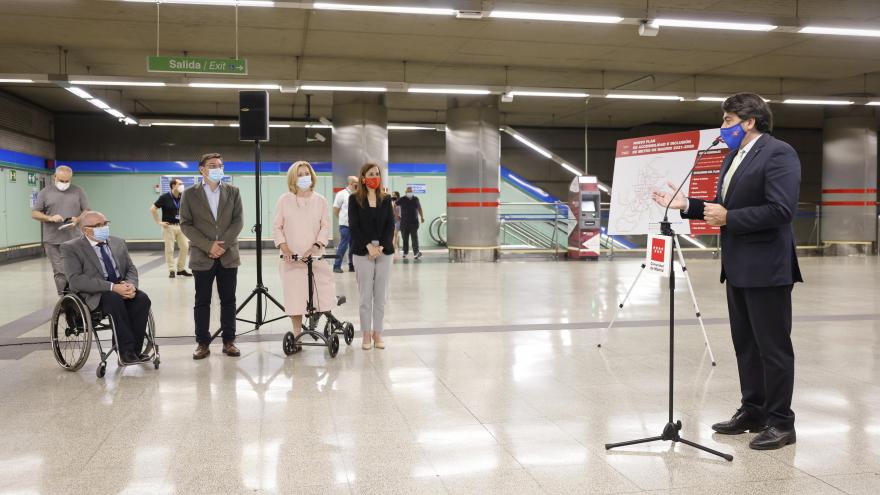Instalaremos 103 nuevos ascensores en la red de Metro
La Comunidad de Madrid ha presentado hoy el nuevo Plan de Accesibilidad e Inclusión 2021-2028 de Metro de Madrid, que posibilitará que 28 estaciones de la red del suburbano madrileño se incorporen al listado de estaciones completamente accesibles, con el objetivo de facilitar el transporte a viajeros con movilidad reducida. En total, se instalarán 103 nuevos ascensores y se invertirán 332 millones de euros en el proyecto, que viene prácticamente a duplicar el presupuesto de Plan anterior de la compañía para el periodo 2016-2020.

El consejero de Transportes e Infraestructuras, David Pérez, y la consejera de Familia, Juventud y Política Social, Concepción Dancausa, han presentado el Plan en la estación de Plaza Elíptica, una de las que han sido remodeladas gracias al anterior programa.
Esta iniciativa permitirá la plena accesibilidad de las siguientes estaciones de Metro: Núñez de Balboa (L5 y L9), Ibiza, Oporto (L5 y L6), Menéndez Pelayo, Duque de Pastrana, Vicente Aleixandre, O´Donnell, Manuel Becerra (L2 y L5), Cuzco, Santiago Bernabéu, Concha Espina, Cruz del Rayo, Pío XII, Ventilla, Barrio del Pilar, Herrera Oria, Artilleros, Estrella, García Noblejas, Banco de España, Acacias (L3 y L5), Carabanchel, Alto de Extremadura y Ciudad Lineal.
Una vez que se culmine el Plan 2021-2028, el 82% de las estaciones de la red del suburbano madrileño serán completamente accesibles, teniendo en cuenta que en la actualidad, el porcentaje es del 67,5%, 204 de las 302 paradas de la red metropolitana. El nuevo programa, al igual que ocurriera con el anterior, está siendo definido en colaboración con CERMI de la Comunidad de Madrid (Comité de Entidades Representantes de Personas con Discapacidad).
El consejero de Transportes e infraestructuras, David Pérez ha destacado que con este tipo de actuaciones “se pone de manifiesto el esfuerzo constante de la Comunidad de Madrid y de Metro de Madrid por avanzar en esta materia. Las Administraciones Públicas tenemos la obligación de abordar de lleno esta barrera en los espacios públicos, y Metro no es una excepción”.
“Metro es uno de los suburbanos más accesibles del mundo, con 1.700 escaleras mecánicas y 554 ascensores repartidos por toda la red, lo que lo convierte en el primer metropolitano de Europa en cuanto a número de ascensores y escaleras mecánicas y el tercero del mundo”, ha recordado Pérez.
Por su parte, Concepción Dancausa ha recordado que “desde la Comunidad trabajamos para mejorar la calidad de vida de las 380.000 personas con algún tipo de discapacidad que viven en la región. Una labor coordinada a través de la Estrategia Madrileña de Atención a Personas con Discapacidad, en la que participan distintas consejerías, entidades y agentes sociales y que incluye medidas orientadas, entre otros aspectos, a asegurar la movilidad y fomentar la autonomía de estas personas”.
Actuaciones entre 2016 y 2020
El Plan de Accesibilidad e Inclusión 2016-2020 de Metro, tenía como objetivo la instalación de 101 ascensores en 36 estaciones de la red del suburbano madrileño, así como la implantación de otros elementos como pavimentos tactovisuales, pasamanos dobles o señalización en braille.
Actualmente de las 36 estaciones del Plan 2016-2020, se encuentran plenamente operativas 20 estaciones, 12 de ellas están en fase de obra, quedando tan solo por licitar las estaciones de Alonso Martínez y Méndez Álvaro, en proceso de redacción de proyecto técnico.





